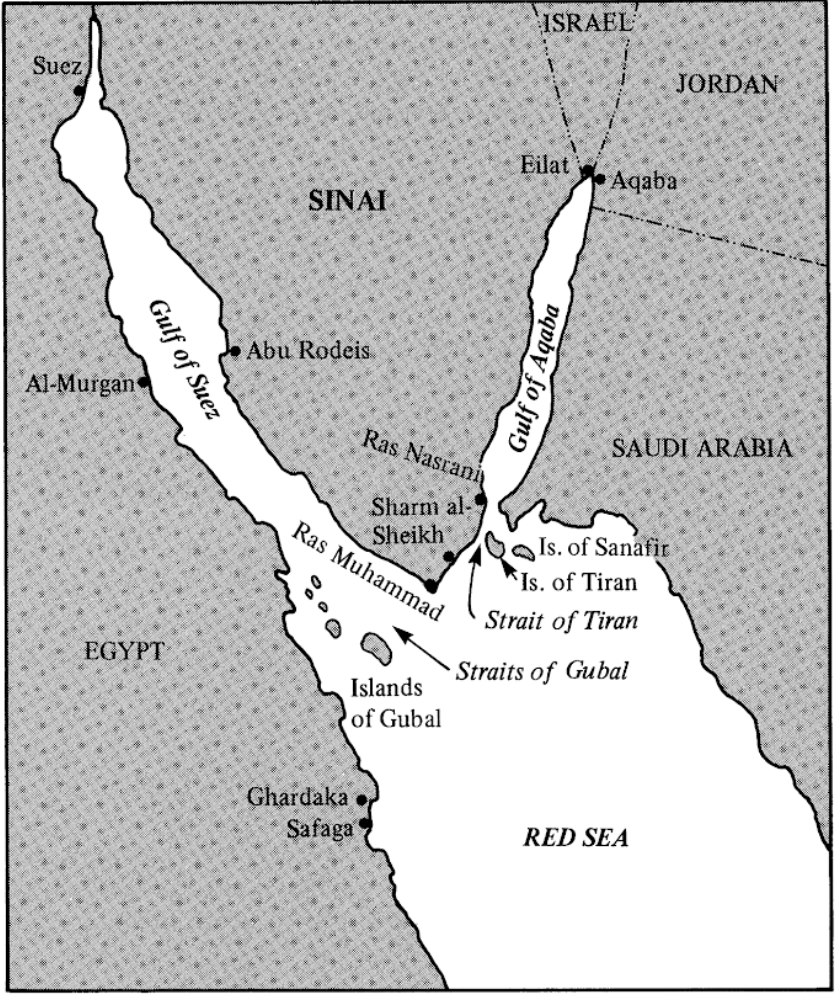The three-mile-wide Strait of Tiran connects the 98-mile-long Gulf of Aqaba with the Red Sea. (See Map 37.) Article V(2) of the 1979 Treaty of Peace between Egypt and Israel provides:
The Parties consider the Strait of Tiran and the Gulf of Aqaba to be international waterways open to all States for unimpeded and non‑suspendable freedom of navigation and overflight. The Parties will respect each other’s right to navigation and overflight for access to either country through the Strait of Tiran and the Gulf of Aqaba.
When asked about the effect of the proposed LOS Convention on the regime of navigation and overflight in this strait and the Gulf of Aqaba, a U.S. official replied:
The U.S. fully supports the continuing applicability and force of freedom of navigation and overflight for the Strait of Tiran and the Gulf of Aqaba as set out in the peace treaty between Egypt and Israel. In the U.S. view, the treaty of peace is fully compatible with the LOS Convention and will continue to prevail. The conclusion of the LOS Convention will not affect these provisions in any way.
On August 23, 1983, Egypt declared upon ratification of the 1982 LOS Convention: The provisions of the 1979 Peace Treaty between Egypt and Israel concerning passage through the Strait of Tiran and the Gulf of Aqaba come within the framework of the general regime of waters forming straits referred to in Part III of the Convention, wherein it is stipulated that the general regime shall not affect the legal status of waters forming straits and shall include certain obligations with regard to security and the maintenance of order in the State bordering the strait.
On December 11, 1984, Israel submitted a statement to the UN Secretary General which stated:
The concerns of the Government of Israel, with regard to the law of the sea, relate principally to ensuring maximum freedom of navigation and overflight everywhere and particularly through straits used for international navigation.
In this regard, the Government of Israel states that the regime of navigation and overflight, confirmed by the 1979 Treaty of Peace between Israel and Egypt, in which the Strait of Tiran and the Gulf of Aqaba are considered by the Parties to be international waterways open to all nations for unimpeded and non-suspendable freedom of navigation and overflight, is applicable to the said areas. Moreover, being fully compatible with the United Nations Convention on the Law of the Sea, the regime of the Peace Treaty will continue to prevail and to be applicable to the said areas.
It is the understanding of the Government of Israel that the declaration of the
Arab Republic of Egypt in this regard, upon its ratification of the [said] Convention, is consonant with the above declaration.
On October 26, 1994, Israel and Jordan signed a Treaty of Peace, article 14, paragraph 3 of which is virtually identical to article V(2) of the Treaty of Peace between Egypt and Israel, quoted above.


